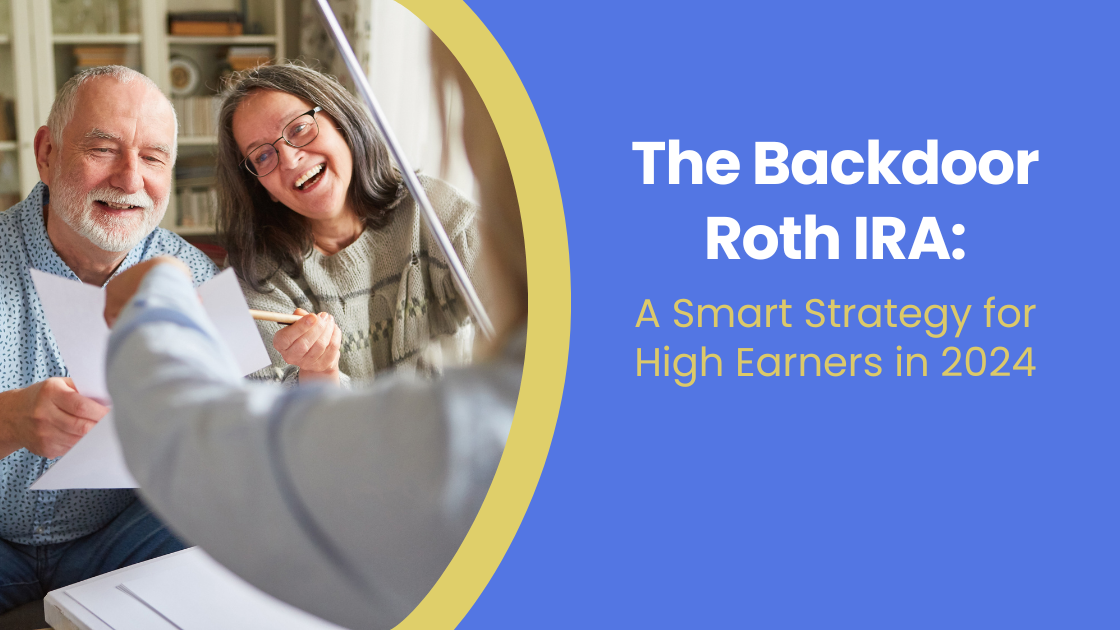- Tax Strategy
- 3 min read
The Backdoor Roth IRA: A Smart Strategy for High Earners in 2024

- Share via:
- Copy link
In the world of retirement savings, the Backdoor Roth IRA is a powerful strategy designed for high-income individuals who are otherwise ineligible to contribute directly to a Roth IRA due to income limits. As of 2024, this income threshold has been updated, making it increasingly important to understand how the Backdoor Roth works and whether it’s a good fit for you or your clients.
What is a Backdoor Roth IRA?
A Backdoor Roth IRA allows individuals whose income exceeds the IRS limit for Roth IRA contributions to still take advantage of the tax-free growth that Roth IRAs offer. For 2024, single filers with a modified adjusted gross income (MAGI) above $161,000, and married couples filing jointly with a MAGI above $240,000, are prohibited from contributing directly to a Roth IRA. However, by contributing to a traditional IRA (which has no income limits), and then converting those contributions to a Roth IRA, high earners can bypass this restriction.
This strategy works particularly well for people who have no other pre-tax funds in traditional IRAs, as it allows for a tax-efficient conversion. But, it’s crucial to keep in mind that if you have other traditional IRA accounts with pre-tax funds, the IRS’s "pro-rata rule" could increase your tax liability during the conversion process.
Why Use a Backdoor Roth IRA in 2024?
The appeal of a Backdoor Roth IRA is largely rooted in the long-term benefits of tax-free growth. Once you’ve converted funds to a Roth IRA, they grow tax-free, and qualified distributions (after age 59½ and holding the account for at least five years) are also tax-free. This feature becomes even more attractive with the ongoing increases in contribution limits, as the 2024 contribution limit for IRAs stands at $7,000 ($8,000 for those aged 50 and over).
Additionally, a major perk of Roth IRAs is that they do not require minimum distributions (RMDs) during the account holder's lifetime, unlike traditional IRAs, which require RMDs starting at age 73 in 2024. This allows your investments to continue compounding tax-free for as long as you keep the money in the account.
What About the Mega Backdoor Roth IRA?
For those looking to take this strategy to the next level, the "mega backdoor Roth" offers an even greater opportunity for tax-advantaged growth. This strategy is available through employer-sponsored 401(k) plans that allow for after-tax contributions and in-plan conversions. In 2024, individuals can make up to $46,000 in after-tax contributions to their 401(k), or $69,000 if they’re over 50. After contributing, these funds can then be rolled over into a Roth IRA, leading to substantial tax-free growth potential.
While this strategy can supercharge your retirement savings, it's important to verify whether your employer-sponsored plan allows for after-tax contributions and Roth conversions, as not all plans offer this option.
Potential Pitfalls and Tax Implications
While the Backdoor Roth strategy offers undeniable benefits, it’s not without its complications. One of the biggest considerations is the potential tax liability. If you have pre-tax funds in a traditional IRA, the pro-rata rule could result in some of the converted amount being subject to taxes. Therefore, executing a clean conversion—where only after-tax contributions are converted—can help avoid unnecessary taxes.
Furthermore, remember that Roth conversions are irrevocable, meaning you cannot undo the conversion once it’s completed. This makes it essential to consult with a tax professional before proceeding, especially if you have a mix of pre-tax and after-tax IRA funds. Additionally, keep in mind the five-year rule: any converted funds must remain in the Roth IRA for at least five years before they can be withdrawn tax-free, regardless of your age.
Forward-Looking Opportunities with TaxPlanIQ
As the complexity of retirement planning increases, tools like TaxPlanIQ are essential for simplifying the process. TaxPlanIQ helps tax professionals and financial advisors create custom-branded tax plans that highlight opportunities like the Backdoor Roth IRA, while also providing clear implementation steps and IRS references. With its easy-to-use platform, TaxPlanIQ can help you identify high-value strategies for your clients, ensuring that they take advantage of all available retirement savings opportunities.
By signing up for a free demo of TaxPlanIQ, you can see how this innovative software can help you offer scalable, high-value advisory services, enabling you to grow your firm and improve client satisfaction.
The Future of the Backdoor Roth IRA
Looking ahead, the Backdoor Roth IRA remains a viable strategy for high earners in 2024, with no indication that it will be phased out despite legislative discussions in recent years. As more individuals seek tax-efficient ways to save for retirement, particularly with the enhancements brought by the SECURE Act 2.0, the Backdoor Roth continues to be an effective way to grow retirement savings tax-free.
For tax professionals, helping clients navigate the rules and regulations of Roth IRA conversions can set your services apart. By incorporating the Backdoor Roth IRA into your clients’ retirement strategies, you not only help them maximize tax savings but also position your firm as a forward-thinking advisor that provides cutting-edge solutions.
Popular blogs
Interviews, tips, guides, industry best practices, and news.
Picture this… you're out on the golf course, having a blast, when suddenly you stumble upo...
Business owners and entrepreneurs are always looking for legitimate and easy ways to save ...
When you sell an investment property, the capital gains tax can put a big dent in your pro...
As the 2024 presidential election comes to an end, former President Donald Trump has unvei...


.png?width=1419&height=1800&name=img2%20(1).png)
.png?width=1389&height=1800&name=img3%20(1).png)